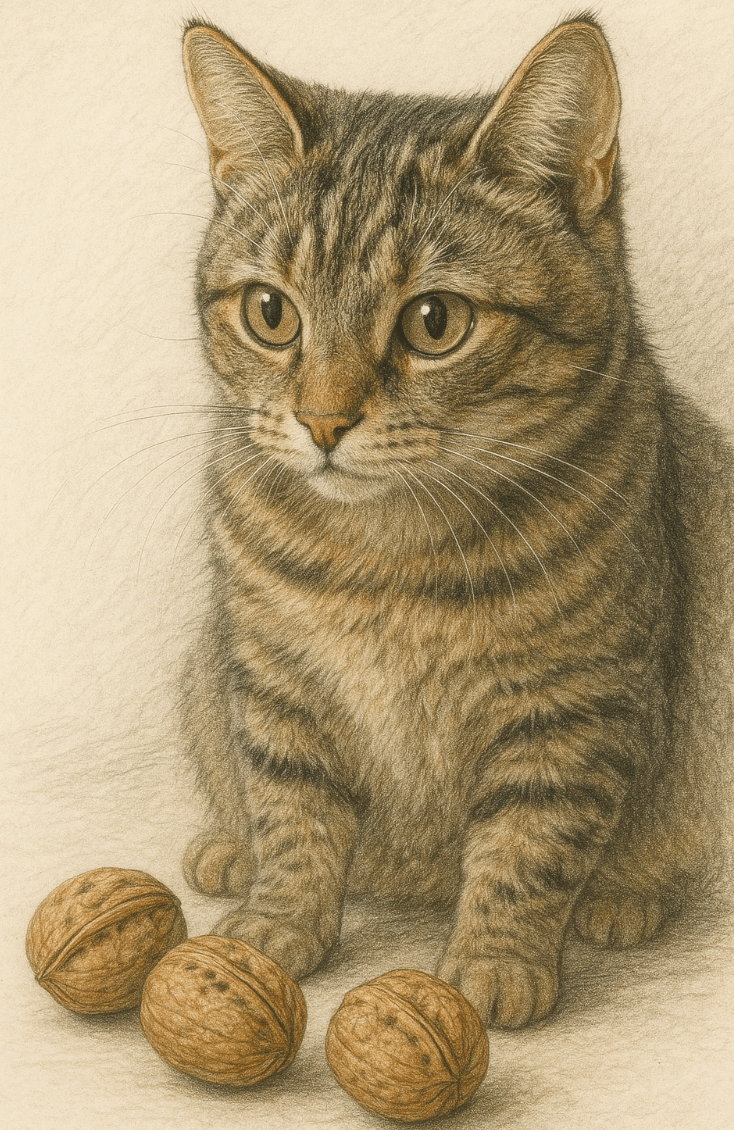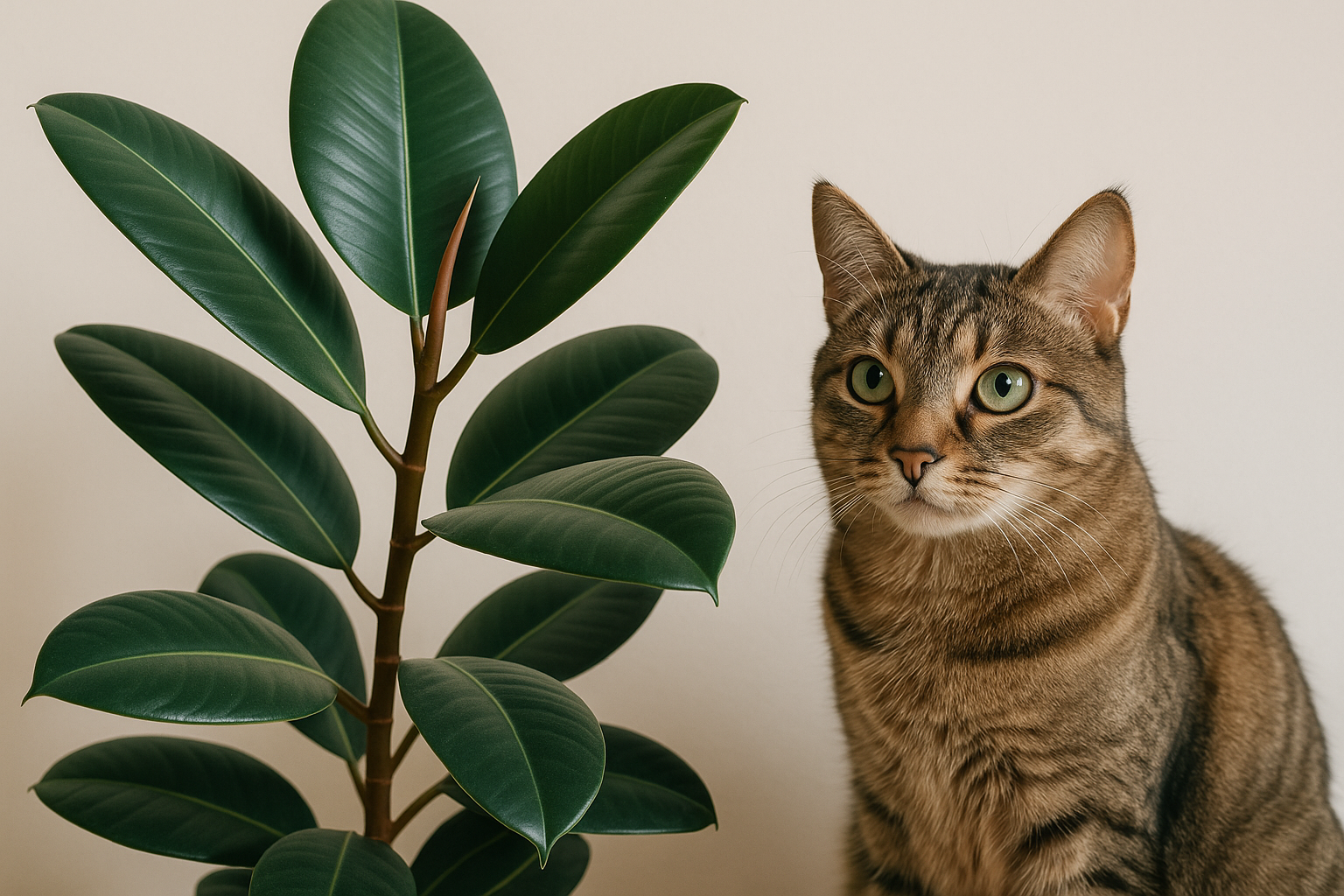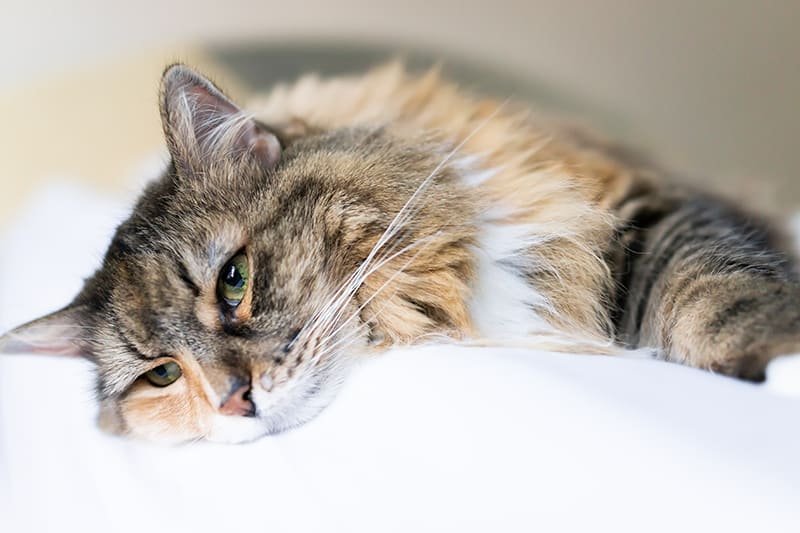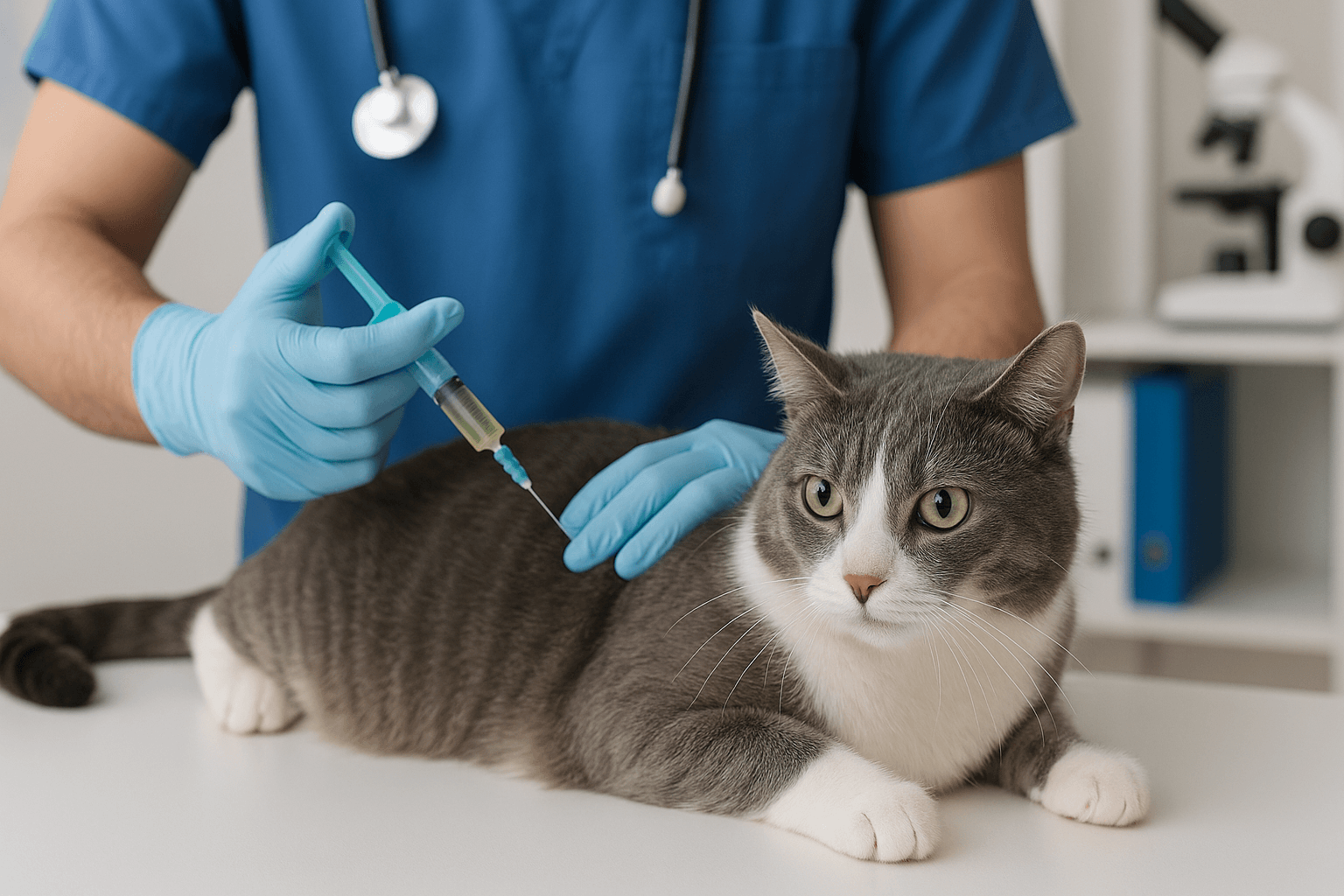Can Cats Eat Walnuts?
As a cat owner, you’ve probably caught your feline friend eyeing your snacks, leaving you to wonder if certain human foods are safe for them. Walnuts, with their rich flavor and nutritional benefits for humans, might seem like an innocent treat to share—but can cats eat walnuts? While cats are obligate carnivores and don’t require plant-based foods in their diet, some human foods can be safely consumed in moderation. However, others pose risks that could harm your pet. In this blog post, we’ll explore whether walnuts are safe for cats, potential dangers, and alternatives to keep your curious companion happy and healthy.
Potential Risks of Feeding Walnuts to Cats
While walnuts aren’t inherently toxic to cats, they come with several risks that make them less than ideal as a snack. Understanding these hazards is crucial to ensuring your cat’s safety.
Choking Hazard:
Whole walnuts or large pieces can easily get lodged in a cat’s throat, especially since they tend to gulp food rather than chew it thoroughly.High Fat Content:
Walnuts are calorie-dense and high in fat, which can upset a cat’s digestive system and lead to vomiting or diarrhea.Mold Contamination:
Walnuts are prone to mold, which can produce mycotoxins harmful to cats if ingested, even in small amounts.Difficulty Digesting:
Cats lack the enzymes needed to break down plant matter efficiently, making walnuts hard for them to digest.Salt and Seasonings:
Store-bought walnuts often contain added salt, sugar, or spices, all of which are unhealthy for cats and may cause toxicity.
These risks highlight why walnuts should generally be avoided as a treat for cats. Always prioritize their health over curiosity about sharing your snacks.
Signs Your Cat May Have Eaten Walnuts
If your cat accidentally consumes walnuts, it’s important to monitor them closely for any adverse reactions. Here are some signs that walnut ingestion may have caused issues.
Vomiting or Diarrhea:
These symptoms often indicate gastrointestinal upset due to the high fat content or difficulty digesting walnuts.Lethargy or Weakness:
Mold exposure or indigestion can leave your cat feeling unwell and unusually tired.Excessive Drooling:
Drooling may signal nausea or irritation caused by consuming something unsuitable.Abdominal Pain:
Signs include restlessness, vocalizing discomfort, or reluctance to move, indicating digestive distress.Allergic Reactions:
Though rare, some cats may develop swelling, itching, or difficulty breathing after eating walnuts.
Recognizing these signs early allows you to seek veterinary care promptly, preventing further complications.
Check this guide 👉Can Cats Eat Blackberries? Best 7 Expert Tips!
Check this guide 👉Can Cats Eat Basil? Best 7 Expert Tips!
Check this guide 👉Can Cats Eat Coconut Oil? Best 7 Expert Tips!
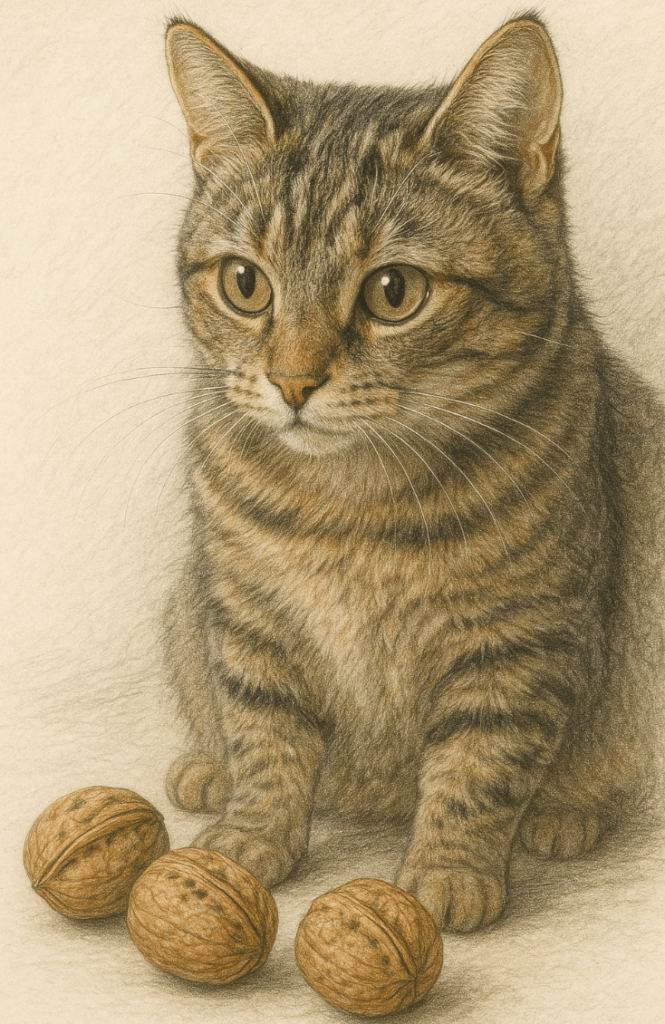
Safe Alternatives to Walnuts | Risks of Unsafe Human Foods |
|---|---|
Plain cooked chicken (no seasoning) | Onions and garlic, which damage red blood cells |
Small pieces of plain fish | Chocolate, toxic due to theobromine |
Pumpkin puree (unsweetened) | Grapes and raisins, linked to kidney failure |
Blueberries (in moderation) | Alcohol, highly toxic even in small amounts |
Cat-safe treats designed for felines | Xylitol, an artificial sweetener deadly to pets |
How to Safely Introduce New Foods to Your Cat
If you’re considering offering your cat new foods, it’s essential to proceed with caution. Follow these guidelines to minimize risks and ensure their well-being.
Consult Your Veterinarian First:
Always check with your vet before introducing unfamiliar foods to confirm they’re safe for your specific cat.Offer Tiny Portions Initially:
Start with a very small amount to observe how your cat reacts before giving more.Avoid Seasoned or Processed Foods:
Stick to plain, unseasoned, and minimally processed items to prevent digestive upset.Monitor for Adverse Reactions:
Watch for changes in behavior, appetite, or bathroom habits after introducing new foods.Stick to Species-Appropriate Foods:
Focus on foods designed specifically for cats, as their dietary needs differ significantly from humans’.
By taking these precautions, you can safely experiment with new foods while keeping your cat healthy and happy.
Why Cats Don’t Need Walnuts in Their Diet
Cats are obligate carnivores, meaning their bodies are designed to thrive on a meat-based diet. Unlike humans, they derive little to no nutritional benefit from plant-based foods like walnuts.
Lack of Essential Nutrients:
Walnuts do not provide taurine, an amino acid critical for feline health, which is found only in animal proteins.Inability to Process Plant Matter:
Cats lack the necessary enzymes to break down cellulose in plants, making digestion inefficient.Unnecessary Calories:
Adding non-essential foods like walnuts can contribute to weight gain without providing real value.Focus on Balanced Nutrition:
A complete and balanced commercial cat food meets all their dietary requirements without supplementation.Curiosity Over Necessity:
Cats may show interest in human foods, but this doesn’t mean they need them—it’s simply natural curiosity.
Understanding these facts reinforces why walnuts and similar foods should remain off the menu for your feline friend.
Common Mistakes to Avoid When Feeding Cats Human Food
Feeding your cat human food occasionally requires careful consideration to avoid mistakes that could endanger their health. Here are some pitfalls to watch out for.
Assuming All “Healthy” Foods Are Safe:
Just because a food is nutritious for humans doesn’t mean it’s suitable for cats.Ignoring Portion Sizes:
Even safe foods can cause problems if given in excess, leading to obesity or nutrient imbalances.Feeding Seasoned or Spiced Foods:
Ingredients like garlic, onion powder, or salt can harm cats, even in small amounts.Leaving Food Within Reach:
Curious cats may help themselves to unsafe foods if left unattended, so store snacks securely.Neglecting Veterinary Advice:
Skipping a professional opinion can result in unknowingly harming your cat with inappropriate food choices.
Avoiding these mistakes ensures a safer and healthier experience for your cat.
Alternatives That Mimic the Texture of Walnuts
If you’re looking for ways to satisfy your cat’s curiosity about crunchy textures without using walnuts, here are some safer alternatives.
Cat-Safe Dental Chews:
Specially designed chews promote oral health while mimicking the crunchiness of nuts.Freeze-Dried Meat Pieces:
These treats offer a satisfying texture and protein-rich nutrition tailored to feline diets.Soft Edible Toys:
Chewable toys made for cats provide mental stimulation and mimic the sensation of crunching.Crunchy Commercial Treats:
Many brands offer treats with a satisfying crunch, formulated specifically for cats.Small Bites of Plain Cooked Chicken:
Offering tiny, dry pieces of chicken can replicate the texture cats might find appealing.
These alternatives allow you to cater to your cat’s instincts while keeping them safe.
Understanding Your Cat’s Natural Instincts Around Food
Cats are naturally curious creatures, often driven by instinct to investigate new smells, textures, and tastes. Understanding their motivations helps explain their fascination with human foods like walnuts.
Hunting Behavior:
Wild cats rely on hunting for survival, so domestic cats retain a strong interest in exploring new food sources.Teething and Chewing Needs:
Kittens and young cats chew on objects to relieve teething discomfort, making crunchy items appealing.Nutrient Seeking:
Cats crave specific nutrients like protein and taurine, which walnuts lack but still attract attention through scent or texture.Playful Exploration:
Cats use their mouths to explore new textures, and walnuts’ unique feel might intrigue them.Territorial Marking:
Chewing and gnawing on objects like walnuts can serve as a way for cats to assert ownership or relieve stress.
By recognizing these behaviors, you can better address your cat’s needs in a safe and controlled manner.
Frequently Asked Questions About Cats and Walnuts
Are walnuts toxic to cats?
While not directly toxic, walnuts pose risks such as mold contamination and digestive upset, making them unsafe for cats.
What happens if my cat eats a walnut?
Monitor for symptoms like vomiting, diarrhea, or lethargy. Contact your vet if you notice any concerning signs.
Can kittens eat walnuts?
No, kittens have sensitive digestive systems and should avoid walnuts entirely.
Are other nuts safe for cats?
Most nuts, including almonds and pecans, are also unsafe due to high fat content and potential mold risks.
What treats are safe for cats?
Plain cooked chicken, small bits of fish, and specially formulated cat treats are excellent choices.
Prioritizing Your Cat’s Health When It Comes to Walnuts
While it might be tempting to share a bite of your snack with your cat, walnuts are best left out of their diet. The potential risks far outweigh any perceived benefits, and cats simply don’t need plant-based foods to thrive. By sticking to species-appropriate nutrition and consulting your veterinarian about safe treats, you can ensure your cat stays healthy and content. Remember, your furry friend relies on you to make the best dietary choices for them—so always prioritize their well-being above all else.
Is the Rubber Tree Cat Safe? Best 7 Expert Tips! Discover expert advice on keeping rubber plants safely in cat-friendly homes and learn top tips for pet-safe plant care.
Low Red Blood Cell Count in Cats: Best 7 Expert Tips! Discover causes, symptoms, and treatment options for feline anemia. Learn how to support your cat’s health effectively with expert advice.
Understanding Megacolon Treatment: Best 7 Expert Tips! Discover effective strategies to manage feline megacolon, from dietary changes to surgical options, ensuring your cat’s comfort and long-term health.
How to Register a Therapy Cat: Best 7 Expert Tips! Discover essential steps to certify your cat as a therapy animal, prepare them for training, and make a meaningful impact in therapeutic settings.

